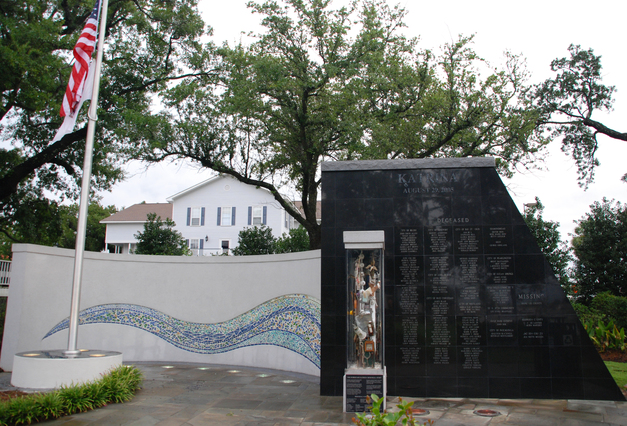This section of the site contains information on Mississippi's recovery from Hurricane Katrina.

About Us: The Mississippi Recovery Office
The Mississippi Recovery Office (MSRO) was established after the devastation caused by Hurricane Katrina. Originally operating as a Joint Field Office, the office transitioned into a longer term Recovery Office in April 2006. The MSRO is a part of FEMA Region IV. Locally, the MSRO is led by Director Dennis Kizziah.
FEMA continues to be an integral part of the recovery following Hurricane Katrina. The recovery is not without its challenges, as the magnitude of Katrina presented an unprecedented level of destruction. Along with our state partner, the Mississippi Emergency Management Agency, FEMA continues to work with local governments and organizations to rebuild stronger and safer communities.
Below are highlights of recovery efforts from Aug. 29, 2005 through June 25, 2014.
Mitigation
Mitigation's mission is to create safer communities by reducing loss of life and property, enabling individuals to recover more rapidly from floods and other disasters and lessening the financial impact of disasters on the Nation.
- FEMA has obligated more than $314.7 million for 500 Hazard Mitigation Grant Program projects statewide. This is part of the $364 million available to Mississippi for projects to reduce the impact of disasters on people and property.
- $158 million has been obligated for 86 safe rooms to protect citizens and first responders.
- More than $2.6 billion in National Flood Insurance Program claims has been paid to 22,809 Mississippi policy holders since Hurricane Katrina. Mississippians have learned the importance of flood insurance as the number of policies in the state has increased from 43,892 before the storm to the current level of 72,377.
Public Assistance
 Public Assistance provides supplemental federal disaster grant assistance for the repair, replacement or restoration of disaster damaged, publicly owned facilities and the facilities of eligible private non-profit organizations.
Public Assistance provides supplemental federal disaster grant assistance for the repair, replacement or restoration of disaster damaged, publicly owned facilities and the facilities of eligible private non-profit organizations.
In Mississippi more than $3.1 billion in FEMA Public Assistance funds has been obligated to rebuild infrastructure and to reimburse local governments for debris removal and emergency protective measures.
In addition to funding for the restoration of Mississippi's infrastructure, FEMA obligated more than $710 million for the removal of more than 46 million cubic yards of dry debris following Hurricane Katrina. The wet debris mission, which cleaned Mississippi's coastal waters, removed 390,000 cubic yards of debris at a cost of $97 million.
Individual Assistance
 Individual assistance is money or direct assistance to individuals and families whose property has been damaged or destroyed and whose losses are not covered by insurance.
Individual assistance is money or direct assistance to individuals and families whose property has been damaged or destroyed and whose losses are not covered by insurance.
- FEMA provided more than $1.3 billion to help families and individuals recover and begin rebuilding immediately after Hurricane Katrina. This includes nearly $880 million provided for housing assistance and $419 million to replace personal property and meet other disaster-related needs.
- More than 45,000 Mississippi families were provided FEMA temporary housing units.
- More than 126,000 Mississippi families received FEMA rental assistance.
Environmental Historic Preservation
EHP has worked in close coordination with FEMA's program areas to deliver disaster assistance to the State of Mississippi. Over 17,000 projects have been reviewed for potential environmental and historic preservation issues and more than 13,000 Hazard Mitigation Grant Program applications reviewed for placement of in-ground shelters.
In August, 2007 FEMA received the Chairman's Award recognizing the Federal Achievement in Historic Preservation in the aftermath of Hurricanes Katrina and Rita. This work included negotiating programmatic agreements that cover a range of measures to mitigate damage to cultural resources, including :
- updating the boundaries of existing historic districts and identifying new historic districts,
- architectural salvage,
- re-surveys of existing historic districts,
- geographic referencing of historic maps in a Geographic Information System
- assisting in the creation and funding of State Historical Markers to interpret sites where historic properties were destroyed
Also under the programmatic agreement, FEMA is conducting surveys of undesignated or previously unidentified historic districts and individual properties and re-surveying existing National Register listed districts. As part of this effort FEMA is preparing a Mississippi Historic Resources Inventory Form and Determination of Eligibility for each historic property surveyed that is eligible individually or as part of a district. The resulting inventory will mitigate the loss of National Register listed and eligible cultural resources that occurred during federally funded Hurricane Katrina recovery efforts, and will also generate effective planning and review information that can be used in the event of future disasters.
Contact Information
Telephone Numbers:
Main Number: 228-594-3000
Fax Number: 228-385-7894
Mailing Address:
Mississippi Recovery Office
220 Popps Ferry Road
Biloxi, MS 39531
Media Inquires:
228-594-3560
